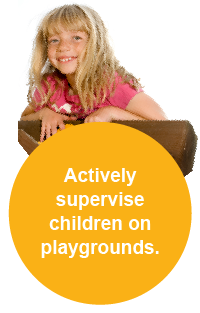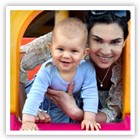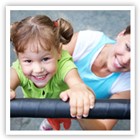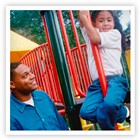Top Tips to Keep Your Kids Safe on the Playground!
Sharing is caring!
With active supervision and some basic safety tips, every day at the playground can be a walk in the park.
The Hard Facts

Falls are the most common type of playground injury, accounting for more than 75 percent of all playground-related injuries. Lack of or improper supervision is associated with approximately 45 percent of playground-related injuries
Top Tips – All Ages
- Actively supervise children on playgrounds. It won’t be hard – they’ll probably be calling for you to watch them climb, jump and swing.
- Ensure that children use age-appropriate playground equipment. Separate play areas for children under 5 should be available and maintained.
- Take your kids to playgrounds with shock-absorbing surfaces such as rubber, synthetic turf, sand, pea gravel, wood chips or mulch. If your child falls, the landing will be more cushioned than on asphalt, concrete, grass or dirt.
- Dress appropriately for the playground. Remove necklaces, purses, scarves or clothing with drawstrings that can get caught on equipment and pose a strangulation hazard. Even helmets can be dangerous on a playground, so save those for bikes.
- Teach children that pushing, shoving or crowding while on the playground can be dangerous.

Top Tips – Babies 0-12 months
- Once your baby has good head and neck control and can sit up without support (usually around 9 months old), give the infant bucket swing seats a try.
- For babies who are learning to crawl or walk, the play area should have a smooth surface that is free of debris
Top Tips – Little Kids 1-4 years

- Actively supervise children on playgrounds. It won’t be hard – they’ll probably be calling for you to watch them climb, jump and swing.
- Teach children that pushing, shoving or crowding while on the playground can be dangerous. Be tough now and you won’t have to worry about it later (easier said than done, we know).
- Check playgrounds where your children play. Look for age-appropriate equipment and hazards, such as rusted or broken equipment and dangerous surfaces. Report any hazards to the school or appropriate local office.
- Little kids can play differently than big kids. It is important to have a separate play area for children under 5.
- Dress appropriately for the playground. Remove necklaces, purses, scarves or clothing with drawstrings that can get caught on equipment and pose a strangulation hazard. Even helmets can be dangerous on a playground, so save those for bikes.
Top Tips – Big Kids 5-9 years

- Check playgrounds where your children play. Look for age-appropriate equipment and hazards, such as rusted or broken equipment and dangerous surfaces. Report any hazards to the school or appropriate local office.
- Avoid playgrounds with non-impact absorbing surfaces, such as asphalt, concrete, grass, dirt or gravel.
- Dress appropriately for the playground. Remove necklaces, purses, scarves or clothing with drawstrings that can get caught on equipment and pose a strangulation hazard. Even helmets can be dangerous on a playground, so save those for bikes.
- Teach children that pushing, shoving or crowding while on the playground can be dangerous.
- Ensure that children use age-appropriate playground equipment.
America’s Playgrounds Safety Check
DOES YOUR PLAYGROUND MAKE THE GRADE? Evaluate your playground using the following criteria.
Learn more from Safe Kids Georgia by following us on Facebook!
This post was put together by Safe Kids Georgia Intern, Rebecah Horowitz
Join us on Facebook


